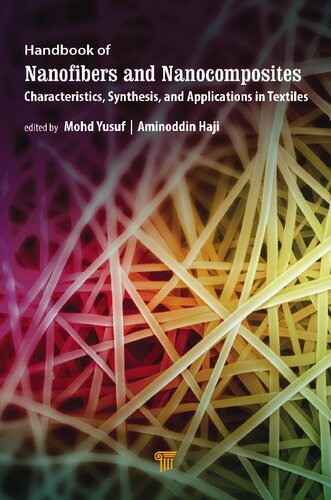

Most ebook files are in PDF format, so you can easily read them using various software such as Foxit Reader or directly on the Google Chrome browser.
Some ebook files are released by publishers in other formats such as .awz, .mobi, .epub, .fb2, etc. You may need to install specific software to read these formats on mobile/PC, such as Calibre.
Please read the tutorial at this link: https://ebookbell.com/faq
We offer FREE conversion to the popular formats you request; however, this may take some time. Therefore, right after payment, please email us, and we will try to provide the service as quickly as possible.
For some exceptional file formats or broken links (if any), please refrain from opening any disputes. Instead, email us first, and we will try to assist within a maximum of 6 hours.
EbookBell Team

5.0
48 reviewsTextiles with functional properties such as antimicrobial finishes, drug delivery, ultraviolet resistance, electrical conductivity, superhydrophilicity, superhydrophobicity, self-cleaning, EMI shielding, flame-retardance can be developed with the help of nanotechnology. Nanomaterials can be added to the textile materials at different stages of the production process, including spinning, finishing, and coating. Nanofibers are textile fibers that show enhanced properties due to larger surface area compared with ordinary textile fibers. They have diameters less than 1000 nm and can hold nanoparticles, drugs, extracts, essential oils, etc. in their polymeric matrix. They actually encapsulate these compounds and are able to control their release by delivering them only at the targeted sites. Recently, nanofibers and textile nanocomposites have attracted great interest in the industry and research, and electrospinning is the most famous among the several methods that have been developed for the fabrication of nanofibers. This book is a collection of the reviews on the recent advances in the fields of nanofibers, nanocomposites, and their applications in textiles as well as related fields.